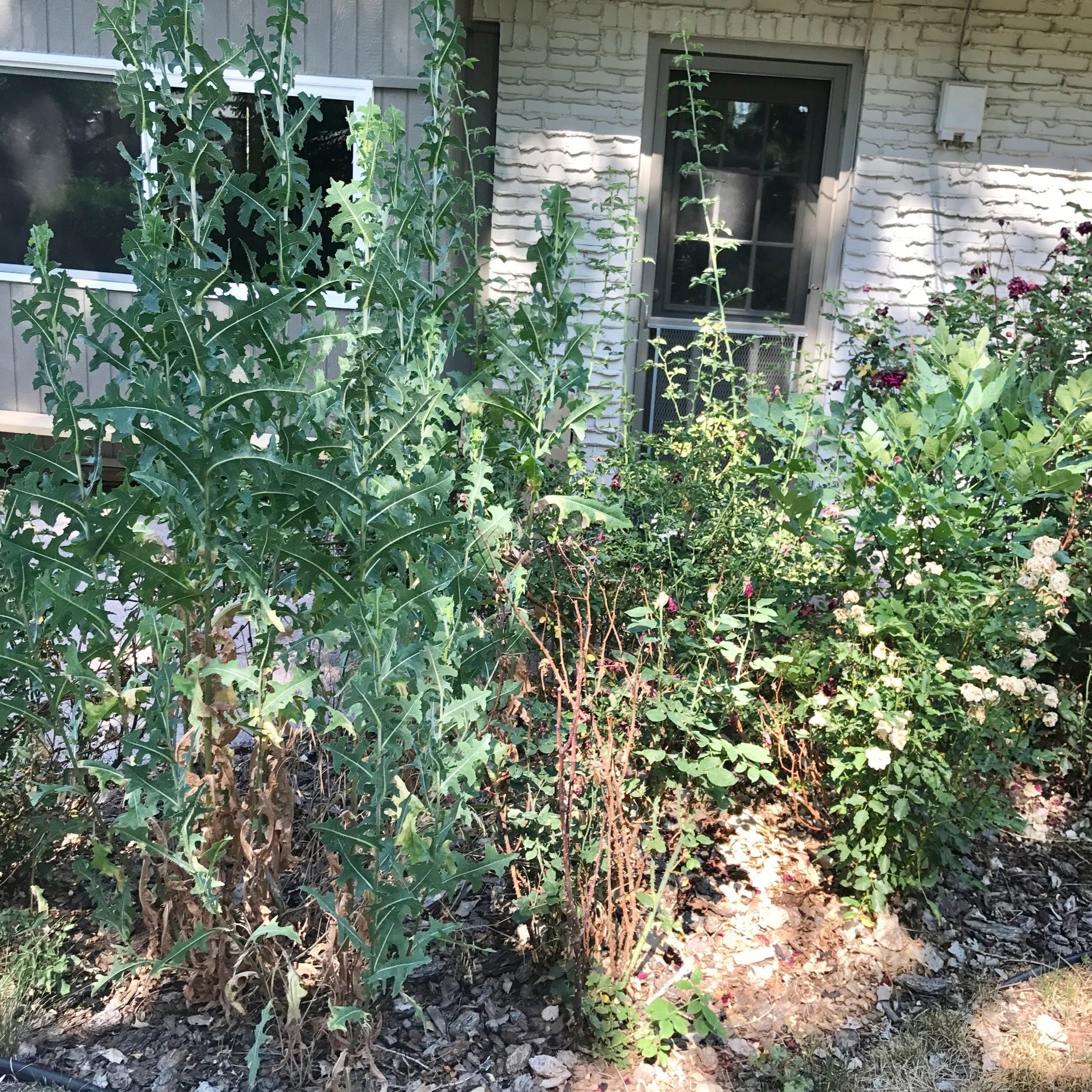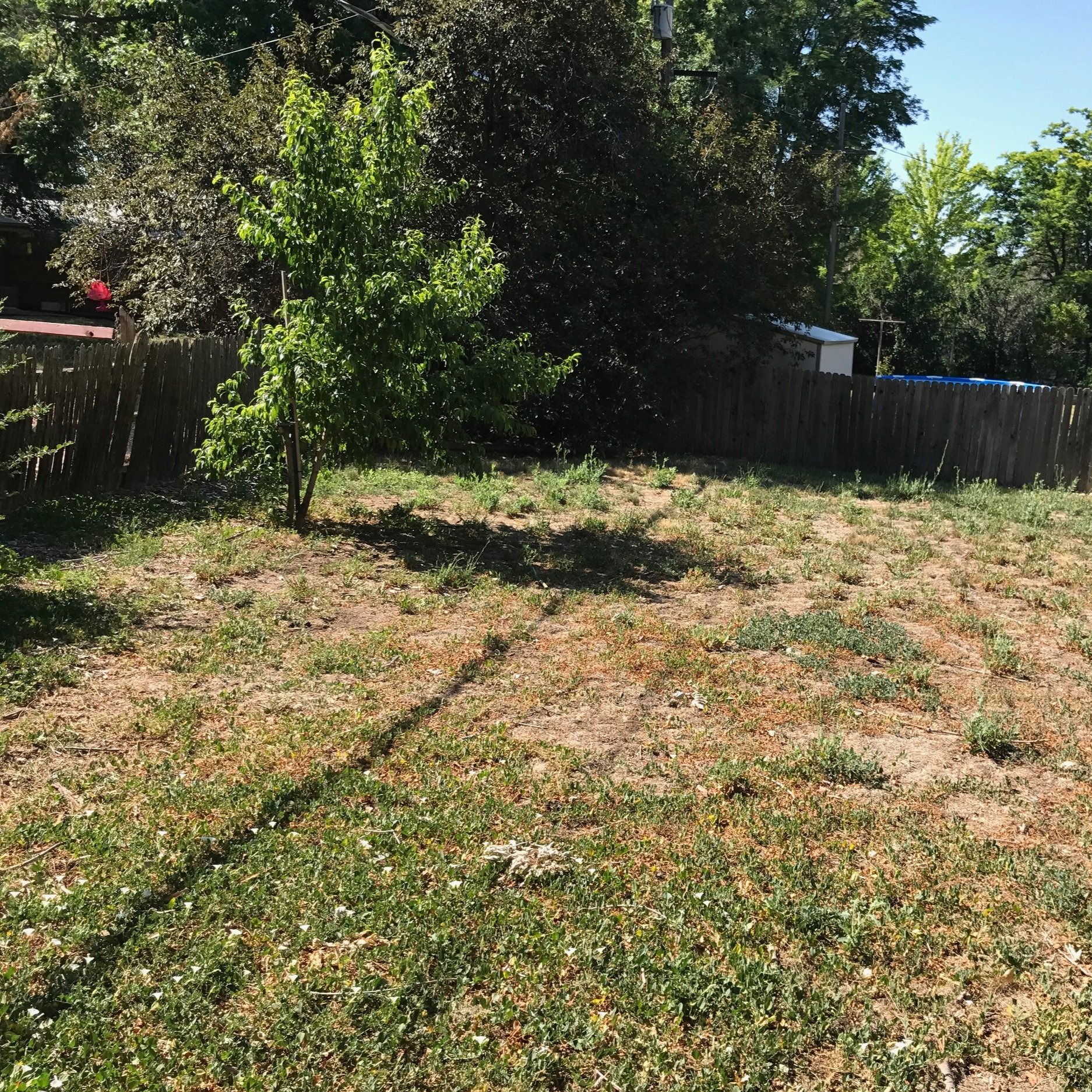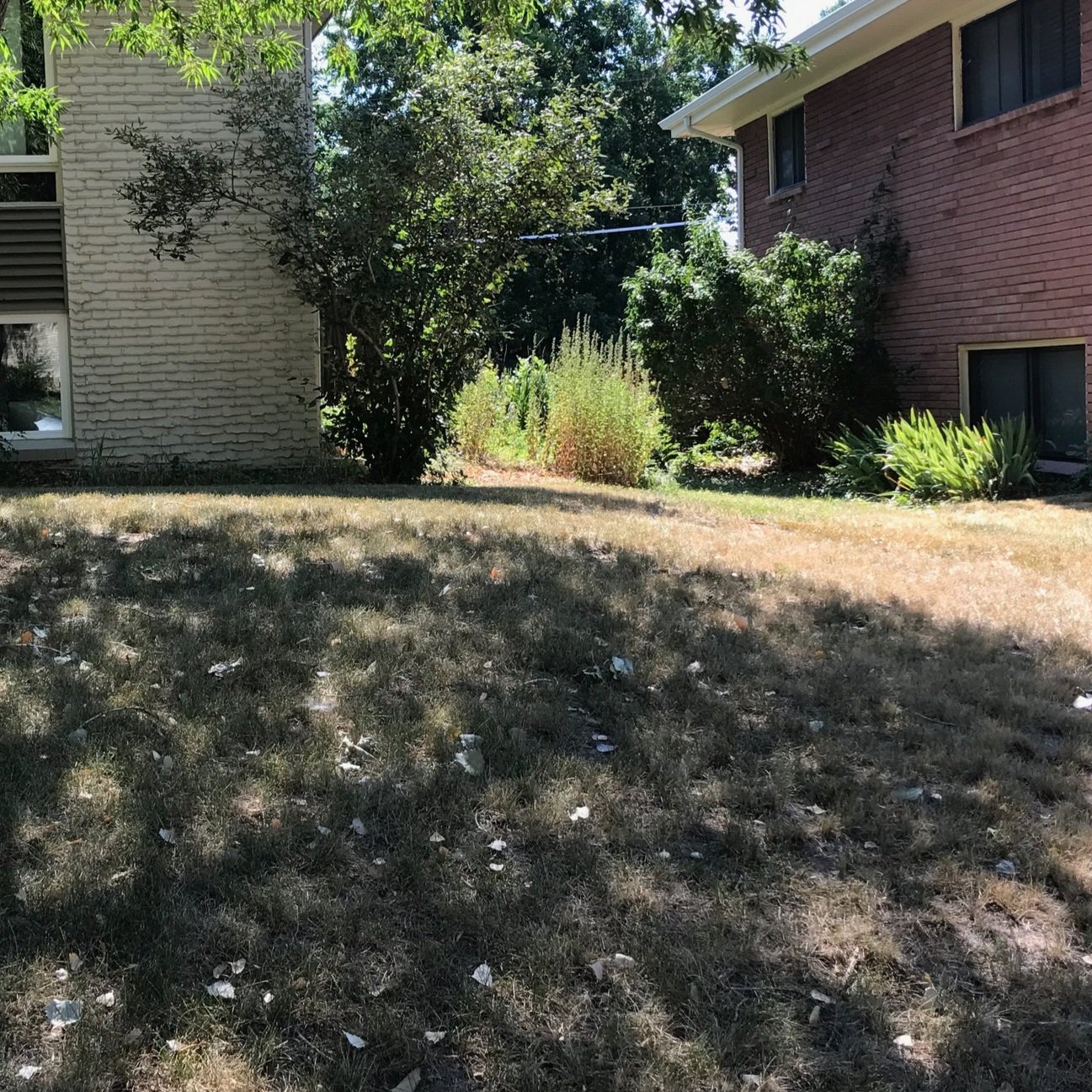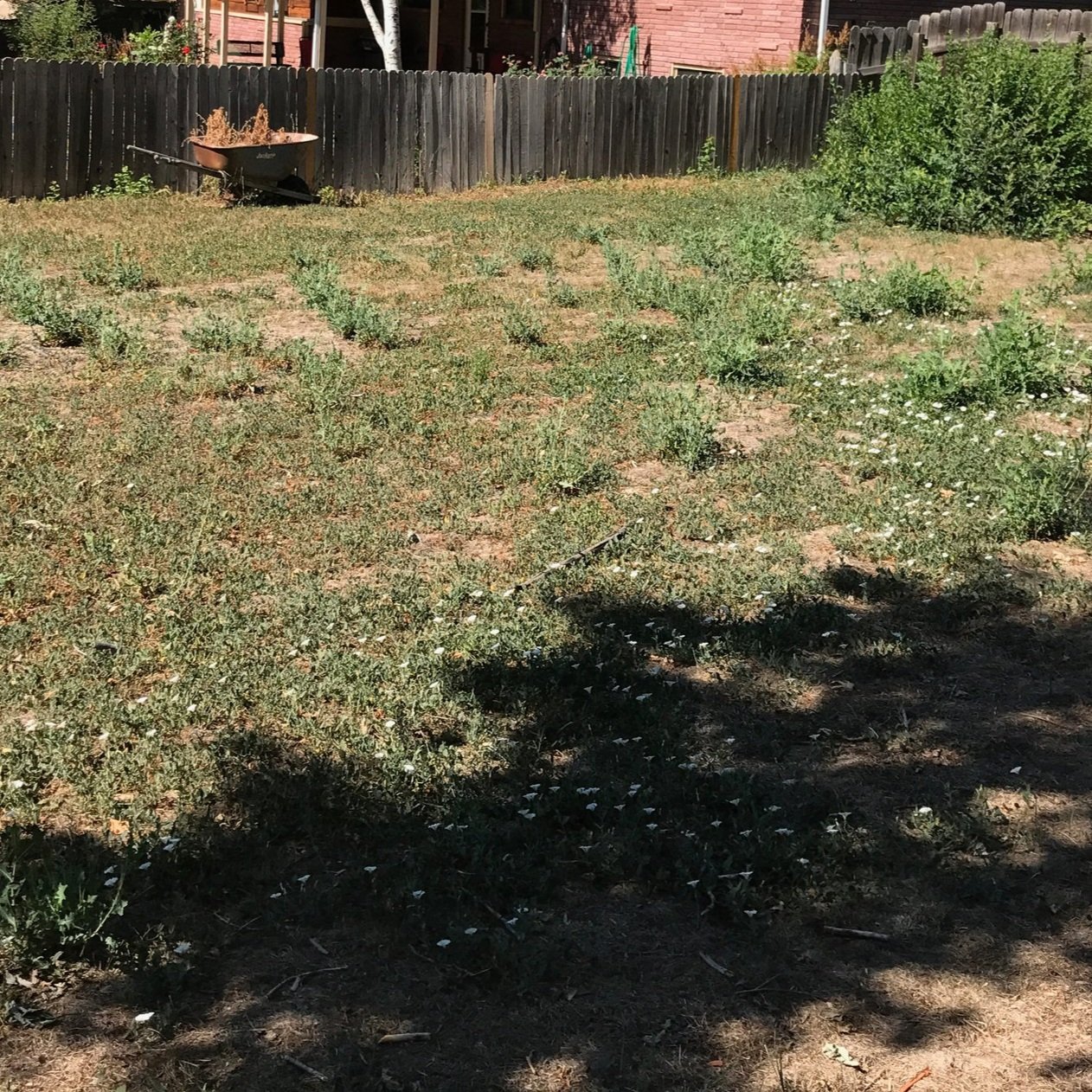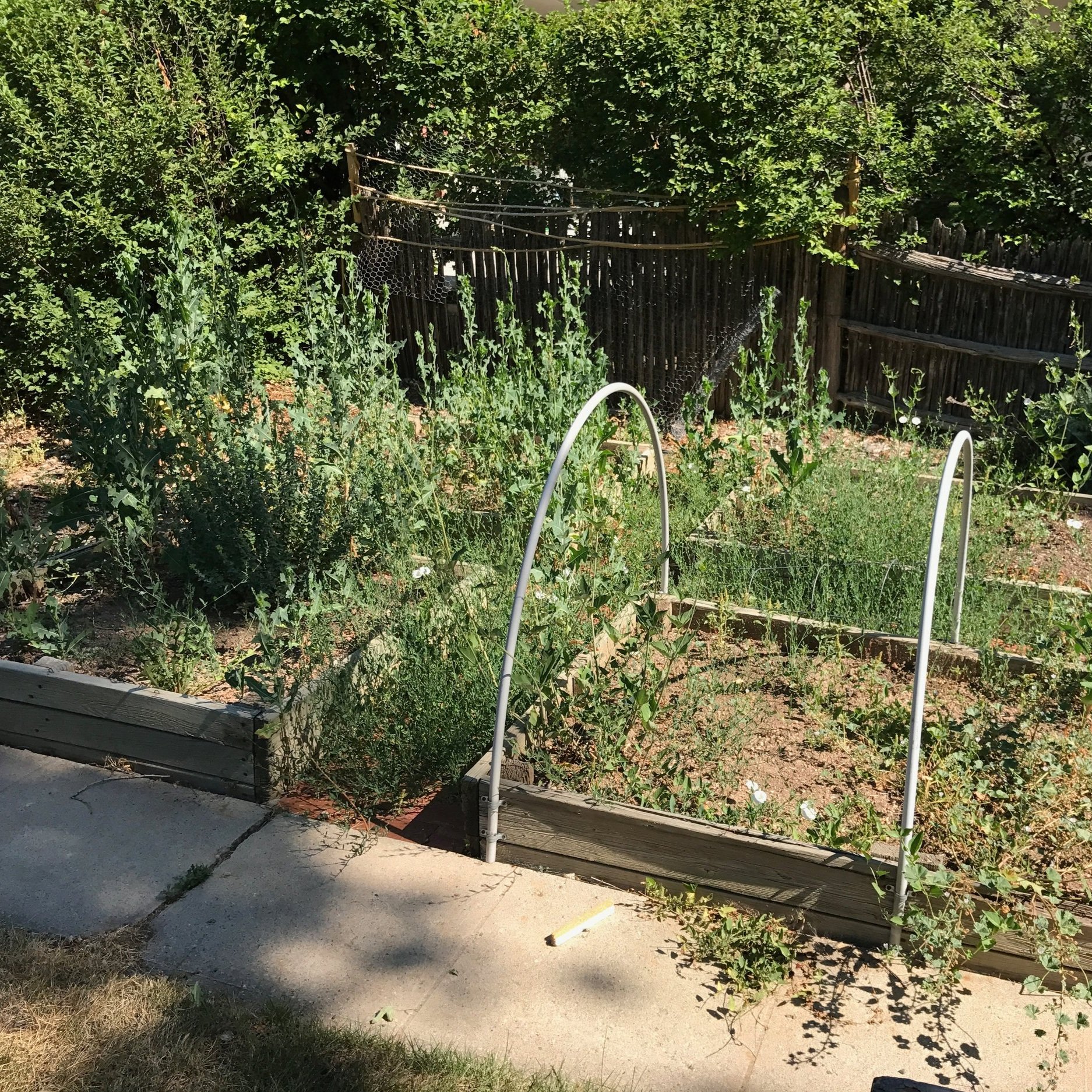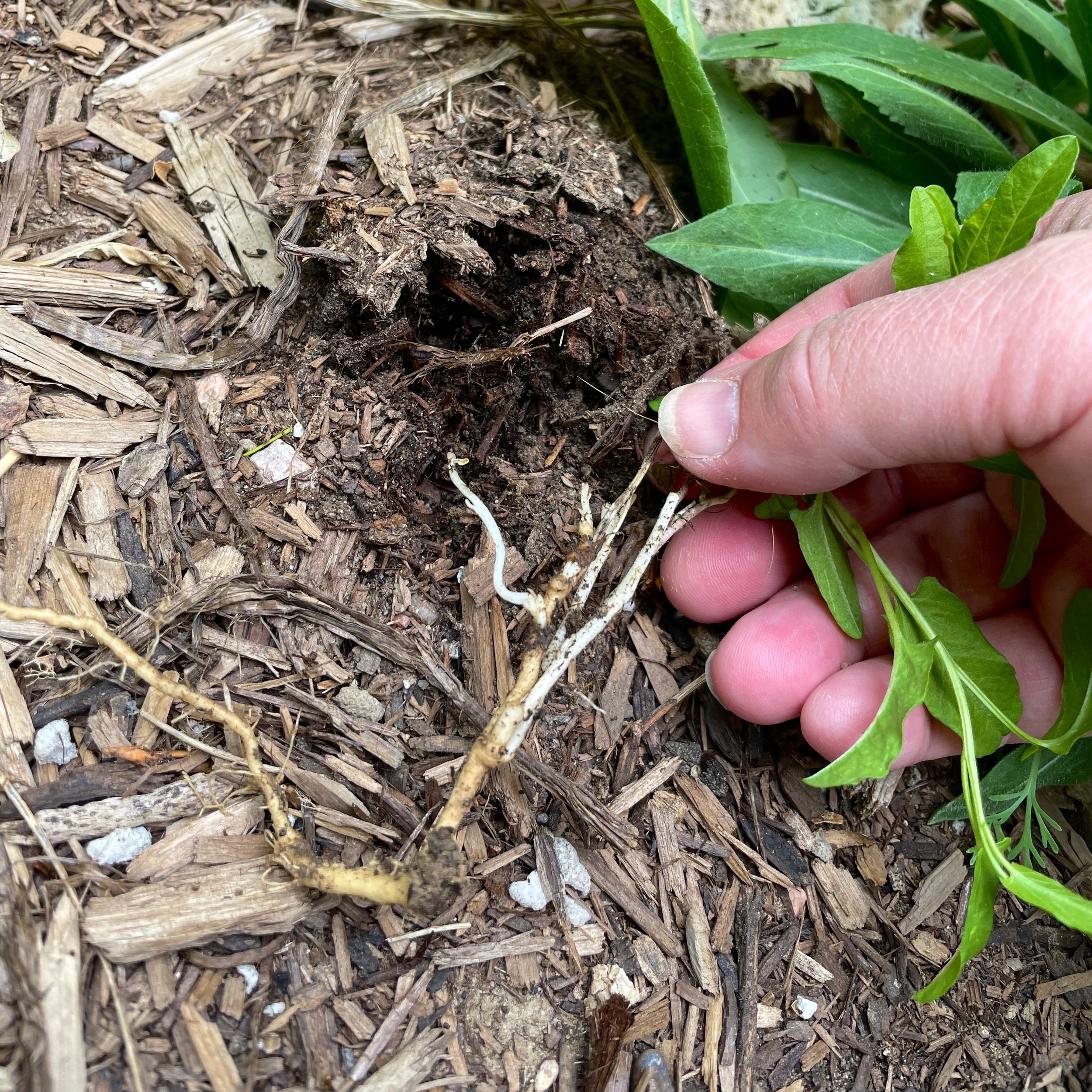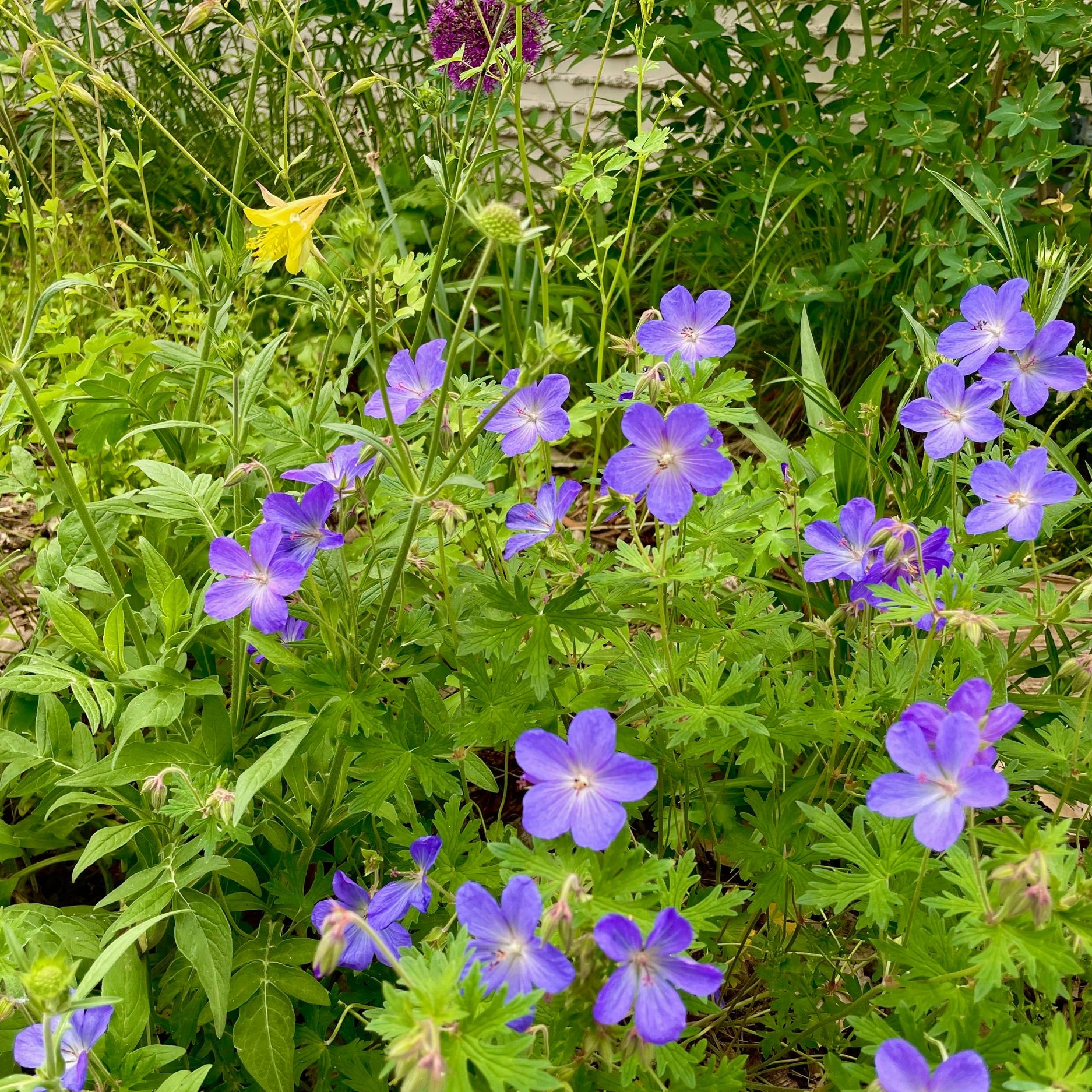Managing Weeds in Your Garden
How to Keep the Weeds Out of Your Garden
Spring flowers from my garden
We are relatively new to Colorado having moved here from California five years ago. And when we bought our home, it had been neglected for many years and even abandoned for a year. So our yard was – I think the technical term for it is – a hot mess. When we moved in on a blistering June day, there were thistles nearly 9 feet tall everywhere. What wasn't covered in thistles hosted nothing but weeds in massive quantities. And some parts of our yard were just baked, bare soil – cracking in the heat. Frankly, as the movers unloaded the truck, I wondered, "Why did we buy this house?"
Before Photos
Lots and lots and lots of weeds and not much else
That first summer I didn't do much to the yard except cut down the enormous thistles. I was too busy unpacking and settling into our new life here in Colorado. I know my neighbors must have been disappointed as our house looked far more shabby than chic.
But the time came. I had to take on the yard. And I was completely overwhelmed by the weeds. So I adopted Desmond Tutu's wisdom as my mantra: "There is only one way to eat an elephant: a bite at a time."
Four years later, I am still eating that metaphorical elephant – tackling our problematic yard one bite at a time. But the hard work is paying off.
The PlantNet app is a fabulous tool!
My problem weeds all in one place: Canadian Thistles, Field Bindweed, and Common Mallow.
My first step: identifying those weeds. I took some photographs and did some hunting. The PlantNet app is amazing and became my favorite tool. You take a photo of the plant you want to identify. Upload the photograph, and it will help you identify what it is. PlantNet uses crowdsourcing, and it's astonishing how accurate the results can be.
As it turns out, I have four primary weed problems: Field Bindweed, Canadian Thistles, Common mallow, and Prostrate Knotweed. I also have dandelions, but I consider them a minor nuisance (and early food for bees).
I got to work identifying good strategies for dealing with each type of weed. I consider herbicides to be a last-resort. I have dogs and a child, and I have concerns about their effects on bees and other insects. Additionally, herbicides can accidentally kill other plants in your garden. So I employ what are known as Manual Weed Control Techniques – essentially doing everything I can to avoid using herbicides.
Necessary Gear for Weeding
There are a few tools which I find indespensible when weeding in my garden.
Barebones Japanese Weeding Hoe
I don’t totally understand the magic of this tool, but it is amazing for weeds that won’t regrow from their roots. It’s like a small scythe — cut them down and move on. I love it!
This standing weeder is fantastic for dandelions and other large weeds with a tap root. It saves your back and works especially well when the soil is moist.
When pulling thistles and other prickly weeds, leather gloves are a must. They protect your hands from thorns and pickles and just make the job easier.
The Best Way to Keep Weeds Out of Your Garden
Here are a few methods that I have found to be effective in my yard:
A new no-dig raised bed just after planting.
No-dig beds are great for weed suppression — especially when combined with dense planting.
No-Dig Gardening
Maybe the most important strategy I have employed is no-dig gardening. For me, this means I have built dozens of raised beds lined with cardboard and filled with a peat-free mix of soil, compost, and manure. In employing no-dig gardening, I am leaving the weed seeds that exist in my soil undisturbed and am burying them under a thick layer of cardboard and compost making it less likely that they will germinate. Doing so also smothers the weeds already growing there. You can create no-dig beds without building anything, too. It's a relatively cheap and easy way to start a garden while also suppressing weeds.
British gardener, Charles Dowding, is the pioneer of bringing No Dig gardening back to the UK and now to North America, too. He has online classes and wonderful books on the subject. I highly recommend following him on Instagram as a start and picking up one of his books to see if No Dig works for you.
Charles Dowding
Click the link for Charles Dowding’s Instagram feed which is full of great gardening tips.
Mites aka Biological Controls
Aceria malherbae under the microscope. Image from Washington State University.
The Colorado Department of Agriculture is cultivating populations of Aceria malherbae, a microscopic mite that feeds solely on Field Bindweed. If you have a large infestation of Field Bindweed like I do, this is a great step to take. The mites will slowly weaken your bindweed plants and will spread without hurting any other plants in your yard. I purchased two shipments of mites last summer and while their efforts seem very slow (not unexpected), I do think they are making a difference.
There are other biological controls available for other types of noxious weeds, too. Fortunately, Field Bindweed is one of them! The waiting list for Bindweed mites is long, but get on the waiting list and hopefully they will get to your name soon.
Don’t live in Colorado? Lots of other states are doing the same! Check with your local department of agriculture to see what biological controls they offer.
Bake & Suffocate | Soil Solarization
Bake and Suffocate — that’s not actually what this strategy is called – it is Soil Solarization – but it should be! I purchased a used black vinyl billboard which we spread over the area where we have the biggest infestation of weeds. You can use other kinds of black plastic, too, but our area was so large that a billboard was the most economical. The black plastic heats up in the sun — the baking part — and deprives the weeds of water and oxygen — the suffocating part. This method is best employed in July and August and needs to be applied for at least 6 weeks. It doesn’t look pretty, but it is effective. However, when you remove the plastic, you need to be ready to address that area immediately — plant, mulch, etc. Otherwise your hard work will be for naught as new seeds germinate and weeds will take hold again.
Logs hold down the edges of a black vinyl billboard which is covering a weed-infested area. This technique is called soil solarization.
In moist soil, even bindweed can be pulled out to the roots if done carefully.
Pull Weeds Out by the Roots
I make a habit of pulling weeds for at least 20 minutes every day. It’s just become part of my routine, and I have a hard time passing a raised bed without pulling those little weeds as they emerge. With Bindweed, this isn’t as effective unless the roots are completely removed. That’s hard as they can be 20 feet deep! But every time I pull a weed, it stresses the plant. And a stressed plant is more susceptible to my mite population and to other factors. So it is a daily constant, and I get a lot of pleasure thinking of the stress I am causing to those weeds over and over again.
Gardening Tip
If your soil is dry, water the weed, wait 10 minutes, then pull. The damp soil will help you get more of the root out!
Frequent Mowing
In the areas where we don’t have grass and are still weed farmers, we mow frequently and keep everything as short as possible. This keeps those plants stressed — again a good thing. It also keeps them from blooming and setting seed. And one thing I am determined to do is to keep my weeds from spreading far and wide. So I make sure that they are mowed and the mower height is very low where I don’t have grass.
Gardening Tip
Manual mowers are the best! Ours is named Kevin (don’t ask), and Kevin does a wonderful job on our grassy and weedy areas. Manual mowers don’t use gas or electicity, are very quiet, and are better for the environment. Our 10 year-old can easily and safely cut the grass and weeds using Kevin, too.
My vegetable garden is in raised beds from VegoGarden. They are tall enough to keep the rabbits out, too.
Lots of Mulch
In all of our raised beds and borders, I apply a thick (3-4”) layer of mulch every year. That’s a lot of mulch, but it works. It keeps weed seeds from germinating, saves water, and makes for less weeding overall.
I use different materials for mulch in different locations. For paths and walkways, I use woodchips. In vegetable gardens, I use compost. And in other raised beds, I use a layer of compost followed by woodchips.
Mulch has many benefits and is a big part of my water-conservation efforts as well.
Dense planting
I am also working to crowd out the weeds. That means dense planting to increase the competition for the weeds. This is a slow strategy which involves a lot of time and money, but I am playing the long game here. Remember: I have an entire elephant to consume. So where I am planting, I put in as many plants as I can and keep them healthy. Where they grow, the weeds are less likely to take up residence.
Hardy Geraniums, Colombine, Alliums, and Blanketflower make for a mass of blooms leaving little room for weeds to germinate.
Do I still have weeds? Yes. Will they ever be completely gone? No. But are things improving over time? Yes, they are. I am four years into this weedy mess, and I will say my yard looks a lot better. It’s not perfect, but every year sees improvement.
Oh, and a note: no actual elephants have been eaten in this process. They are majestic animals and deserve protection.


